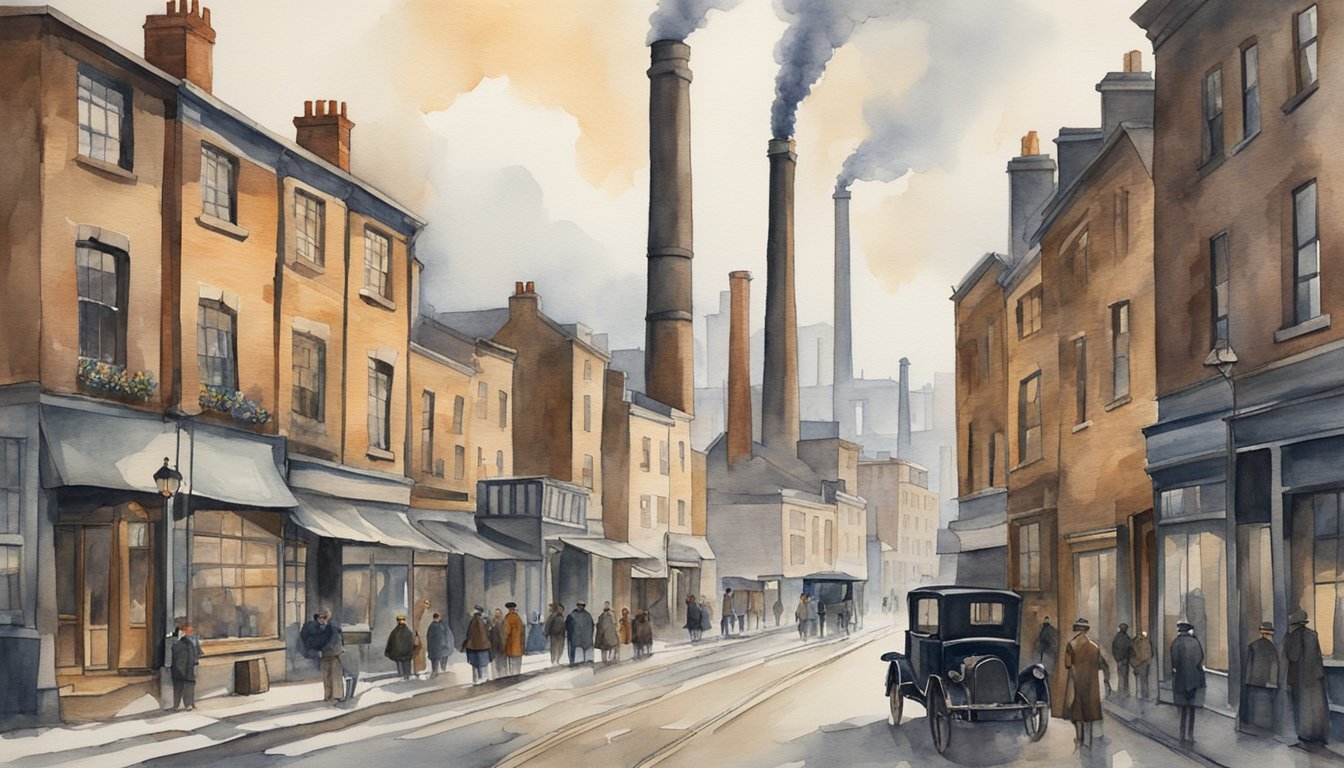Historical Accuracy and Inspirations

The hit series “Peaky Blinders” intricately weaves historical elements with fiction, capturing the essence of post-WWI England and the rise of the Shelby family amidst actual turmoil and criminal activities.
The Real Peaky Blinders Gang
The gang known as the Peaky Blinders did indeed terrorize the streets of Birmingham, but they thrived in the late 19th century rather than the 1920s. Historian Carl Chinn points to the discrepancies between the TV gangsters and their true historical counterparts. The actual gang members, rather than being the sharp-dressed figures of the show, were mainly composed of lower-class youths.
Characters Based on Historical Figures
Remarkably, many characters in “Peaky Blinders” mirror or draw inspiration from genuine historical figures. The series depicts Winston Churchill in his early political role, showcases the influence of trade unionist Jessie Eden, and pits the Shelby family against rival gang leaders like Billy Kimber and Oswald Mosley, leader of the British Union of Fascists portrayed by actor Sam Claflin.
Socio-Historical Context of 1920s Birmingham
The backdrop of 1920s Birmingham is crucial for understanding the climate in which the fictional Shelbys expanded their criminal empire. Post-WWI Birmingham was a hub of social and economic change, beset by class struggles and rampant gang violence. The creators used this historical canvas to develop dramatic narratives, ensuring that although they took liberties with the truth, the ambiance of the Roaring Twenties and its societal issues were captured authentically.
Creative Elements and Differences from Reality

“The Peaky Blinders series, while rooted in historical contexts, embellishes and reimagines the past to create a compelling narrative that deviates in significant ways from actual events.”
Artistic License and Fictionalization
Writers of the Peaky Blinders series took artistic license by crafting a story that follows Thomas Shelby, portrayed by Cillian Murphy, and his family’s rise to power in post-World War I Birmingham. In reality, characters like the cunning Tommy, the volatile Arthur, and the strategic Aunt Polly are amalgams of multiple historical figures or entirely fictional. The show also dramatizes interactions with historical individuals including Winston Churchill and Billy Kimber, enhancing the dramatic tension between characters.
- Fictional Characters and Events: Thomas Shelby, as a singular mastermind, is a creation of the show. Sam Neill’s character, Chief Inspector Chester Campbell, is another instance of fictionalization, representing the law’s pursuit of gangsters in that era without being a historical figure himself.
- Razor Blades Myth: The infamous razor blades sewn into the Peaky Blinders caps, a trademark of their style, is largely considered an urban legend, with little evidence suggesting such a practice.
Cinematic Style and Character Development
Peaky Blinders stands out with its cinematic influence on character development and storytelling. The show’s visual style, filled with sharp suits and smoky backdrops, became iconic and helped further characterize the gang and its members as well-dressed and formidable figures. This portrayal diverges from the more ragtag appearance associated with the historical gang members.
- Style and Atmosphere: Succeeding in creating an engrossing atmosphere, the series promotes a romanticized image of the gang’s style, which contrasts with the dirtier and less glamorous authentic subculture of the time.
- Character Arcs: Characters such as Tom Hardy’s Alfie Solomons are developed with intricate backstories and unique personas, demonstrating the show’s commitment to a character-driven narrative.
Impact on Popular Culture and Modern Media
The cultural impact of Peaky Blinders is immense, influencing modern media and fashion while renewing interest in the historical era it portrays. The widespread use of Birmingham slang and the glamorization of the gangster lifestyle are direct consequences of the show’s popularity. Additionally, the show’s distinct aesthetic has led to a resurgence in vintage hairstyles and tailored suits, with fans eagerly adopting the look of the Shelby family. Even discussions about health and lifestyle have been influenced, as viewers joke about the characters’ habits, including the prevalence of skinny people and snoring in tense, smoke-filled scenes. This cultural fascination ensures that Peaky Blinders remains a touchstone for both historical drama enthusiasts and modern trendsetters alike.
- Slang and Lexicon: The show has popularized early 20th-century Birmingham slang, infusing it into modern dialogue and bringing historical linguistic elements to the forefront of popular culture.
- Media and Documentary Influence: After its success, numerous documentaries and books have been produced, aiming to clarify the line between the televised mythology and the grim reality of street criminals in industrial England.

